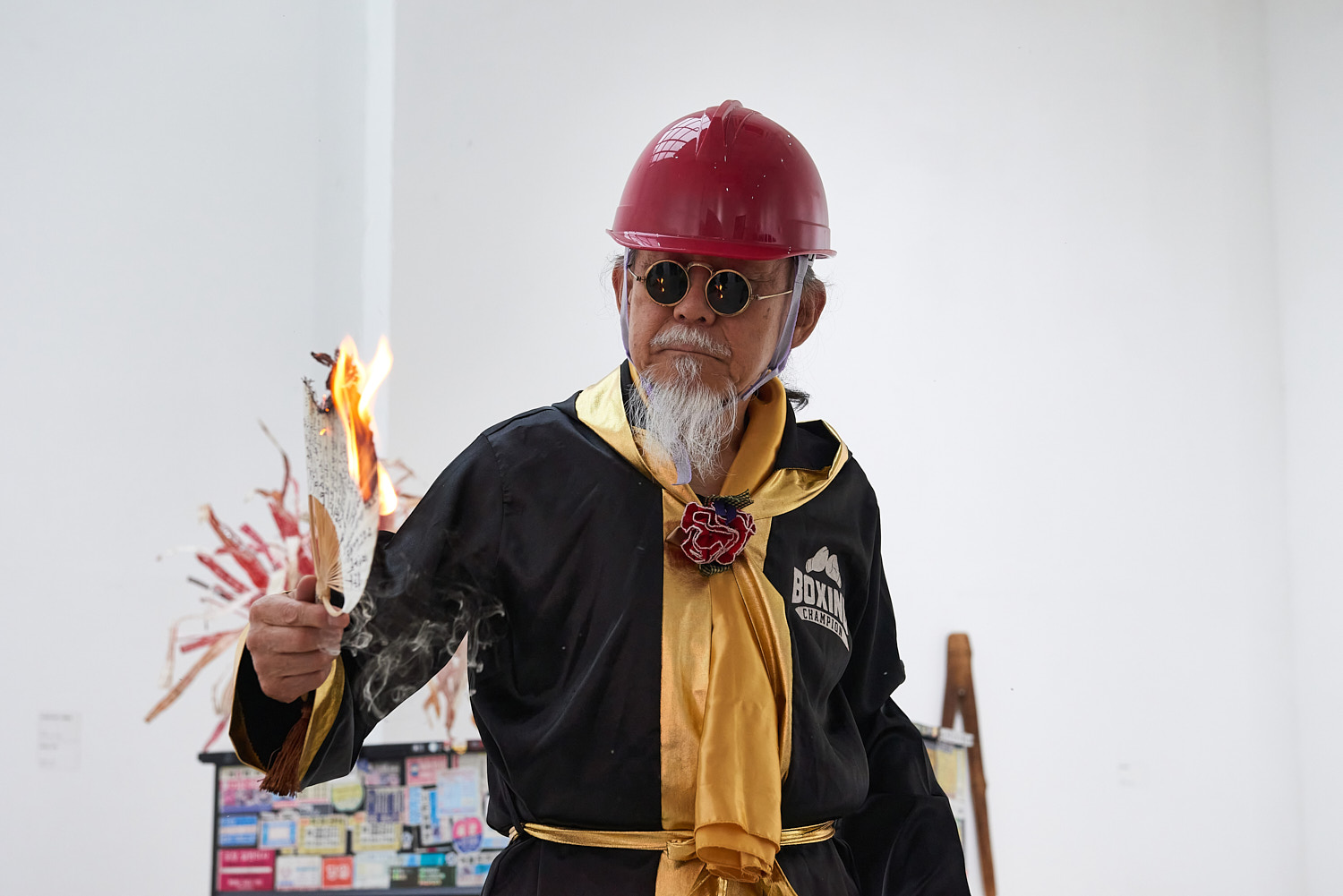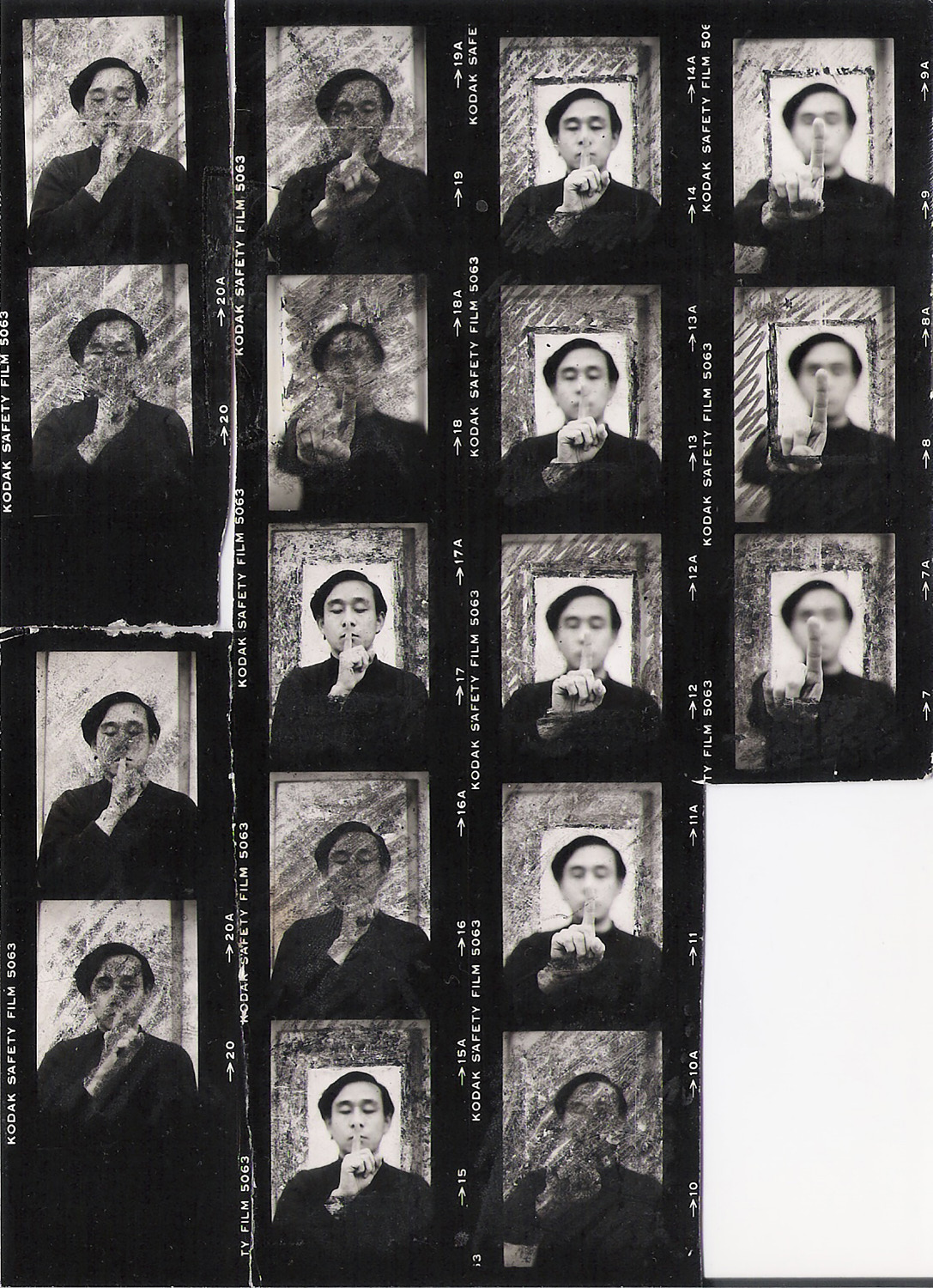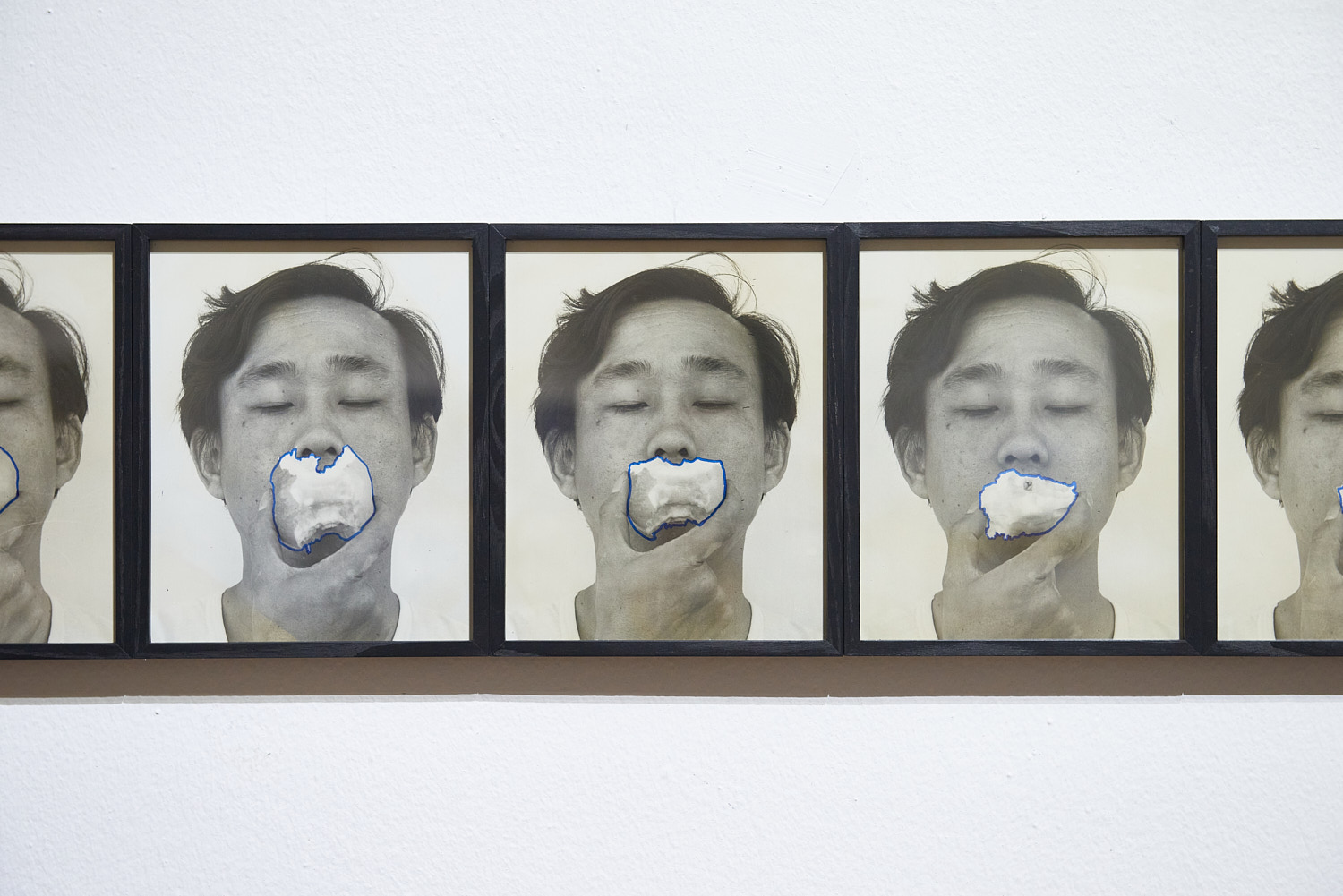This story originally appeared on i-D Korea.
The year 2023 is a significant one for the artist Sung Neung Kyung. His third solo exhibition is currently in full swing at Seoul’s Gallery Hyundai, while he’s simultaneously representing the scene he helped pioneer over half a century ago at The Guggenheim in New York. Only the Young: Experimental Art in Korea, 1960s–1970s is a celebration of the wave of artists who came of age in the decades after the Korean War. As you might expect, in responding to the fast-changing social and political climate, they produced some of the most important avant-garde art of the 20th century. In the exhibition, over 80 works spanning painting, photography, sculpture, installations and film are on display; along with a series of re-staged performance art.
Sung Neung Kyung’s journey spans almost five decades, a remarkable odyssey that has seen him navigate both the unbridled creative realm of street photography, and that of more orchestrated performance art. “Newspapers: From June 1, 1974”, which saw the artist display a daily newspaper on a gallery wall before cutting out every single article with a razor blade, is perhaps his most impactful work. It was his way of resisting, he has since explained, the politically and socially oppressive atmosphere at the time.
Now approaching his 80s, Sung Neung Kyung has seamlessly transitioned into the world of mega-galleries, with his first solo exhibition outside of Korea opening at Lehmann Maupin, New York in September next year. After half a century of dedication to his craft, he has rightfully earned the distinction of being considered a master of Korean experimental art. We had the privilege of speaking with him in Seoul’s cultural hub of Hannam-dong.

I’m eager to hear how you’re feeling as we find ourselves well into this momentous year in your journey.
Presenting the pieces I already had at home spared me from any physical strain. Still, as I started interacting with individuals from the commercial gallery scene, I keenly sensed the disconnect between my perspective and theirs. It was a challenge, given the differing languages we spoke.
Could you share your thoughts on what mark the Only the Young: Experimental Art in Korea, 1960s–1970s exhibition at the Guggenheim Museum in New York will leave on the history of Korean art?
If you explore the history of Korean experimental art, the creative movements of the 60s and 70s had almost been forgotten as the 80s brought minjung (people’s art) and Postmodernism to the forefront. While experimental art seemed to disappear from our artistic narrative, its survival and resurgence within Korean art, driven by systematic organisation and historicization, is a fortunate development. I hope our nation continues to recognise and elevate its artists, transforming them into living history. While blazing trails is important, fostering substantial artistic content is paramount. I envision the Guggenheim exhibition as an extension of this endeavour.
It’s now opened. What kind of reactions has it garnered?
I often contemplate the importance of language. Historically, our nation has developed under diverse external influences, leading to a lack of linguistic independence. The reason conceptual artists frequently grapple with language issues lies in the fact that concepts inherently manifest through language. While I am grateful and fortunate for this Guggenheim exhibition that encapsulates Korean conceptual art, a lingering sense of regret persists due to Korea’s inability to achieve this independently. Still, I can definitely sense that Korean art has gained much more recognition.

You created works such as “Newspapers: From June 1, 1974” and “Everyday English”, where stretches of time seem to come to life. As you approach your 80th birthday, what does the concept of time mean to you?
To me, the notion of time is akin to a daily practice. Instead of using the word “time”, I prefer the term “practice”. It’s the daily commitment to proving oneself as an artist that truly unveils the intangible.
In the 70s, newspapers held a dominant place in our collective consciousness. Obviously their significance has waned since then…
Newspapers, in the contemporary context, no longer hold the same suspense they once did. For me, reading a newspaper is akin to sculpting words and the ensuing empty spaces. It’s about presenting and observing the spaces that have vanished, the language that’s reborn, and deciphering what resonates within these intricacies. In this exploration, I’ve also unearthed a new facet of media art through the photographs preserved within the pages of newspapers.
You were a pioneer of incorporating photography into fine art in Korea. Can you describe the power of photography as a medium?
The power of photography lies in its unique ability to simultaneously render communication realistic yet enigmatic. It possesses a quality of dematerialisation. When we liberate photography from its traditional role as a mere pictorial tool and instead perceive it as a medium, photography becomes a message in itself. In my exploration of photography as a medium, I believe that its true strength resides precisely in its role as a conduit for expression.

With the presence of so many artists in the world today, do you believe it has become a more beautiful place?
A world enriched by many artists is undoubtedly a blessing. However, the inadequacies within our arts education system pose a risk of standardising art like fast-food production, potentially leading to a decline in the number of artists.
What have you been working on recently?
I began drawing sketches three years ago, starting July 17, 2020. I create my art using a smartphone app, and now I can’t change my phone, even if I wanted to. This has become a daily practice.
Can art heal us?
Some claim that art has a healing effect, suggesting that both artists and audiences can find solace through exposure to art. However, that is a blatant lie. When in need of healing, it’s best to consult a doctor. The association of “healing” with art likely stems from the concept of “purification” and catharsis, where viewing art can evoke a sense of emotional release. People often confuse this cathartic experience with genuine healing, and it’s crucial to differentiate between the two.
It’s common for the word healing to surface when discussing purification, but it’s important not to mistake the temporary emotional relief derived from art for longterm purification. If one perceives themselves as healed solely by engaging with art, it elevates art to a quasi-religious role, even though art is not a form of religion. Artistic expression is born from the very fact that we do not yet fully comprehend what art truly is. There’s no definitive answer; it’s an ongoing quest for understanding. Paradoxically, the absence of a clear answer is what keeps us alive and creating art. The beauty of art lies even in its ruins.
Only the Young: Experimental Art in Korea, 1960s–1970s is on display at The Guggenheim Museum in New York from 1 September 2023 – 7 January 2024. His solo exhibition at Lehmann Maupin New York will run 8 September 2024 – 5 November 2024.



Credits
Translation Hyerim Ko
All images courtesy the artist and Lehmann Maupin, New York, Hong Kong, Seoul, and London.
